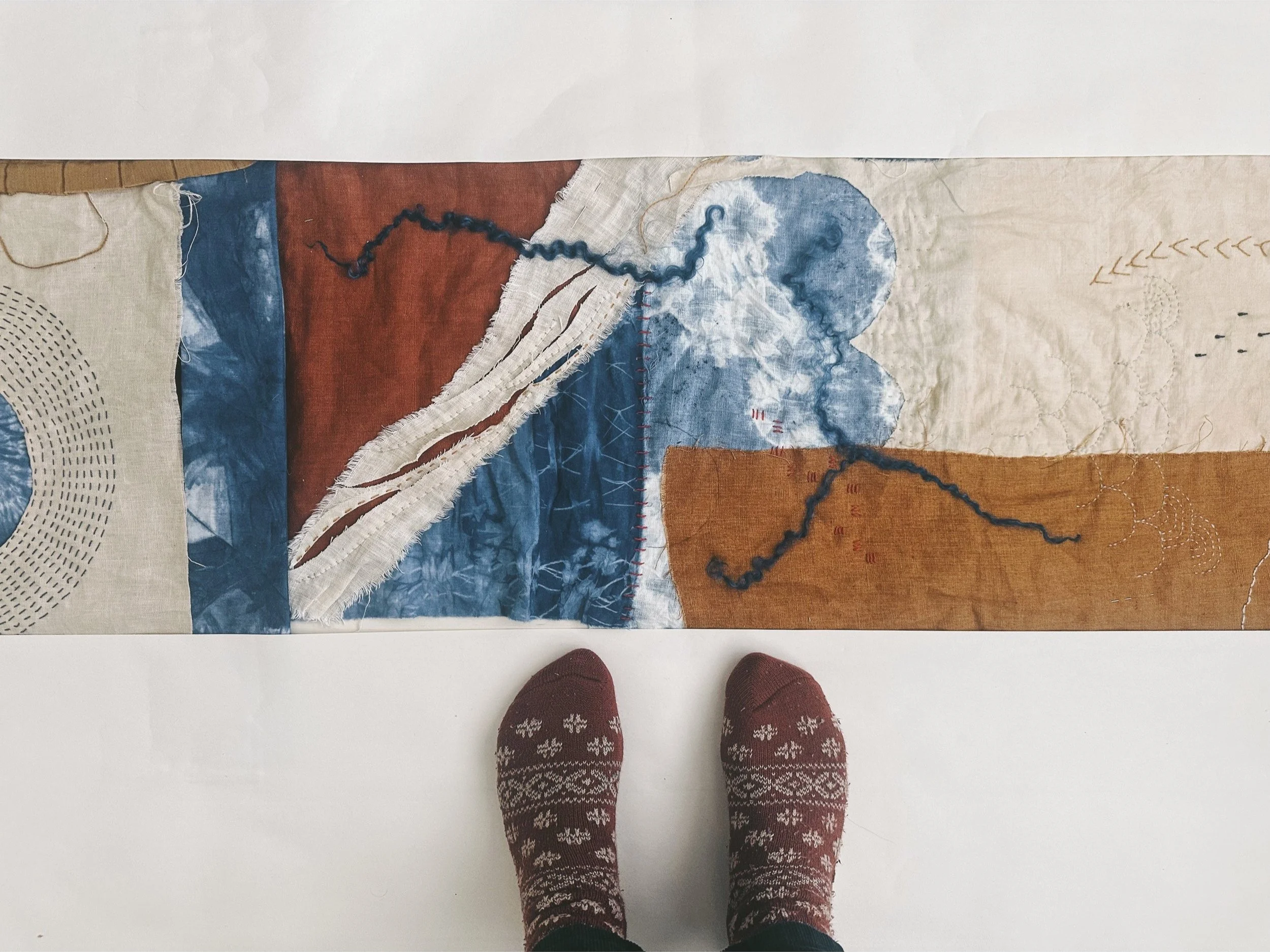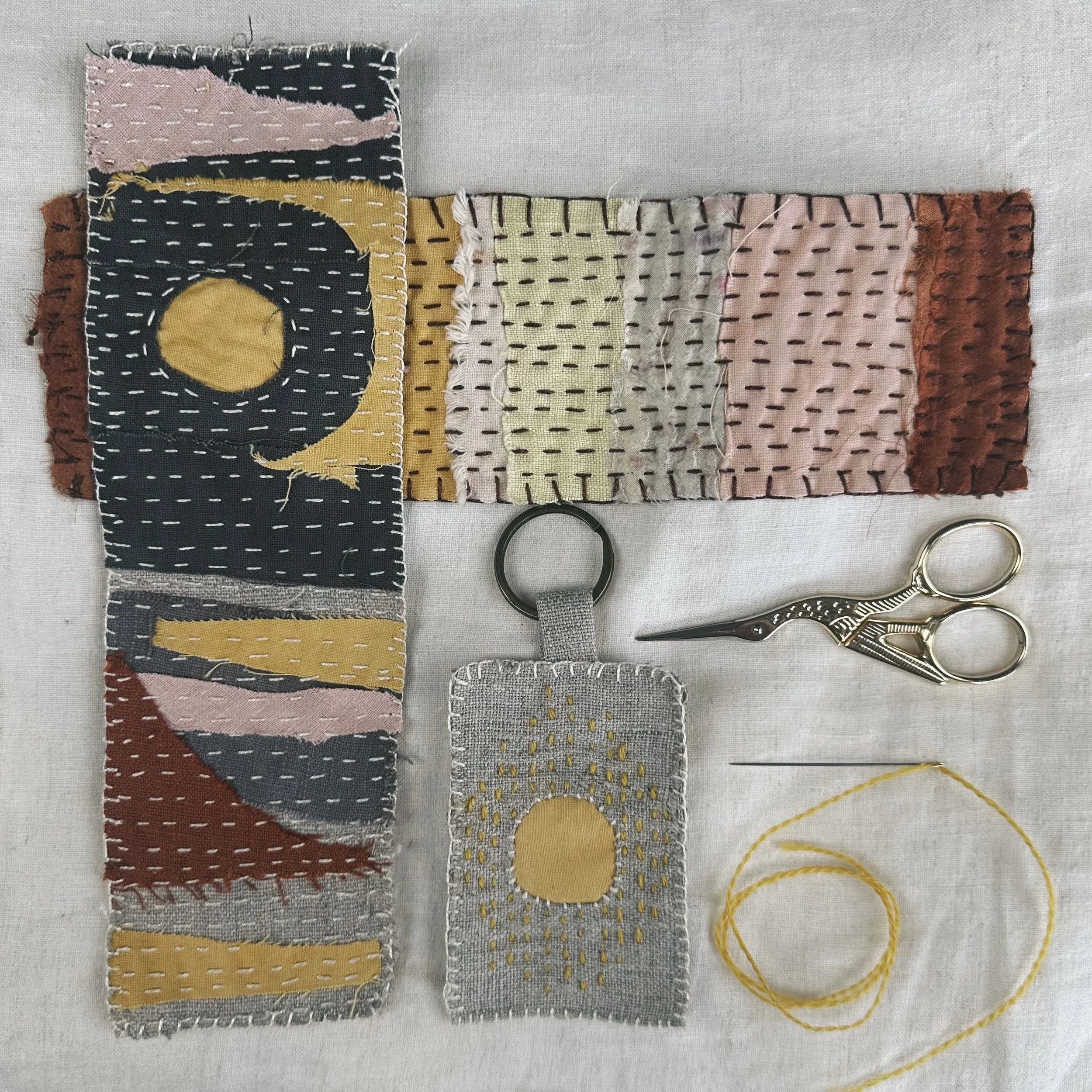Best Hand Stitching Tutorials for Beginners and Beyond: Find the Right Project for You
One of the most common questions I’m asked is:
"Which of your tutorials would be best for me?"
The answer depends on what you’re looking for. Are you new to stitching and want something simple to get started? Do you need a calm, grounding project to help ease a busy mind? Or are you looking for a more expressive, open-ended experience where you can play and experiment?
Each of my tutorials has its own rhythm—some are structured with clear templates, others are more intuitive and freeform. Below, I’ve shared a little about each one to help you decide where to begin.
Wrap Yourself in Kindness: A Collaborative Quilt Celebrating Childrens Stories
The Wrap Yourself in Kindness project was part of RSE Day (Relationships and Sex Education Day) activities, with the 2023 theme Let’s Launch into Kindness. RSE Day, which began in Nottingham in 2018, is now a nationwide celebration promoting healthy relationships and positive sexual health education. Schools, families, and communities come together each year to explore these important topics and share their work.
This project brought together children from 19 schools across Nottingham to create a beautiful, collaborative quilt that celebrates the power of kindness. This double-sized quilt featured abstract shapes and words inspired by the children’s own stories of kindness, blending their creativity into a unified work of art. It was an honour to bring their designs to life and witness their thoughtfulness in action.
Liberty Patchwork Collective: Designing My Block for the 150th Anniversary Quilt
To celebrate 150 years of its iconic fabrics, Liberty invited makers from around the world to take part in a special project—the Liberty Patchwork Collective. Participants were asked to create a patchwork block using Liberty fabrics, which will be combined into a collaborative quilt honouring the brand’s rich textile heritage. I jumped at the chance to contribute to this significant piece, marking Liberty’s history with my own appliqué and patchwork block.
Wayfinding: What I Learned After Quitting My Job to Become an Artist
As a textile artist, the last few years have been an exploration of finding my place within the art and craft world. Making the leap from a secondary school art teacher to a full-time artist has been both an exhilarating and uncertain journey. In many ways, it’s been about wayfinding—learning how to navigate this new chapter, balancing insecurities about where I fit, and discovering ways to make this practice work for me at this stage of life.
Finding Balance: The Art of Positive and Negative Space in Quilting
Exploring the relationship between positive and negative space is one of the most compelling aspects of my quilting practice. The interplay between dark and light, softened by hand-stitched textures, creates a dynamic visual language. The way a composition feels unbalanced with just a slight shift in a form’s placement—and how balance can be restored by adding or repositioning other elements—offers endless creative possibilities.
A soft frayed edge atop a solid background or an uneven hand-quilted line breaking bold, machine-pieced forms adds contrast and movement. This tension excites me, and it’s a concept I explore deeply in my work.
3 Easy DIY Fabric Scrap Projects for a Sustainable Christmas
Learn to make beautiful, sustainable Christmas decorations using scrap fabrics. Perfect for zero-waste Christmas decor and DIY craft projects.
The Making of The Fabric of Home: Quilts that Tell Stories of Housing Insecurity
The making of the quilts for the exhibition ‘The Fabric of Home’ displayed at Sheffield Winter Garden. Quilts by Rebekah Johnston telling stories of housing insecurity using research lead by Hannah Fairbrother of Sheffield University.
How to Make a Slow-Stitched Bookmark or Keyring: A Step-by-Step Guide
This lovely project is a perfect way to use up your smaller scrap fabrics and create functional textiles that make ideal gifts. Recently, I've rekindled my love for reading and needed something to stop me from folding book pages or using a hairpin as a bookmark. Inspired by the Japanese mending technique of boro, where fabrics are layered over one another and attached with running stitch, I created a very strong and sturdy fabric. I've kept the edges raw and finished with a blanket stitch, making this a truly handmade item with no attempt to disguise that! The possibilities with this technique are endless. You can keep it simple by laying your fabrics in stripes as I did with my first attempt, or you can incorporate different shapes. I used an earthy palette of plant-dyed silks, cottons, and linens. Depending on what you have at hand, you can play with different colour arrangements, try creating a gradient, or mix and match patterns with solids.
Embellishing Clothing with Appliqué: Bringing Art into Everyday Life
As an artist who creates intuitively, I've often worried that my work might lack the conceptual depth or meaning that is often celebrated in the art world. Not least because textile art is often devalued through its association with 'women's work' or 'craft'. However, I've come to understand that the choices I make – the colours, shapes, and design elements – are all imbued with significance, whether it's an interesting shadow I noticed, an emotional response to a song, or a childhood memory. These elements come together under the surface as my hands stitch away, creating something deeply personal and meaningful.
Unblocking Your Creative Flow: Strategies for Textile Artists
Creative block can strike anyone, and as a textile artist, it can be particularly frustrating. Whether you're dealing with ADHD, anxiety, or just the general ebb and flow of inspiration, finding ways to overcome these obstacles is crucial. Here are some strategies that might help you get back into your creative groove.
5 Ways to Source Fabric Sustainably
I am often asked where I source my fabrics. In a world where environmental concerns are growing, working with sustainable materials is becoming more and more important. With this in mind, I’d like to share my top 5 tips for sourcing fabric sustainably.












